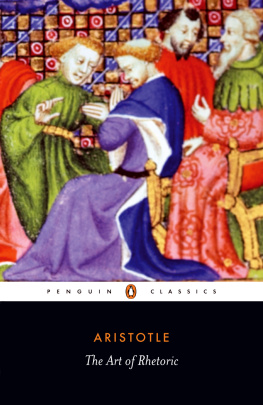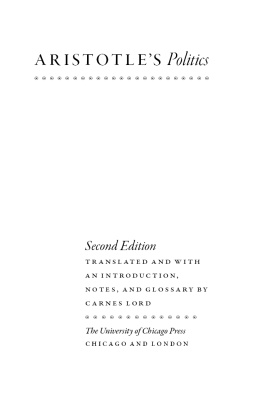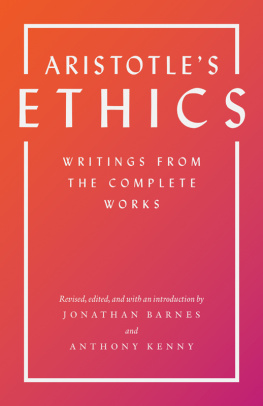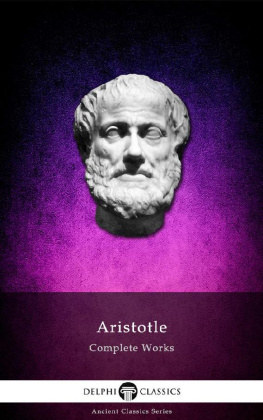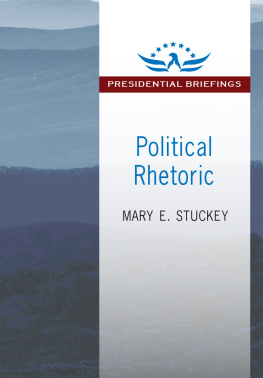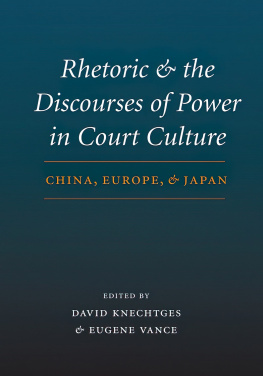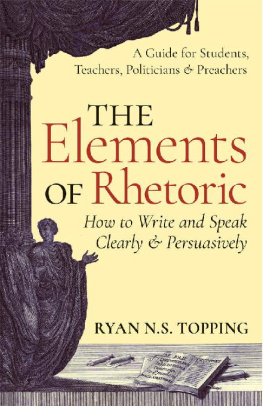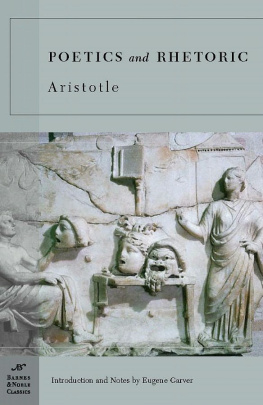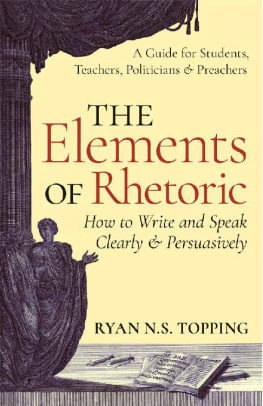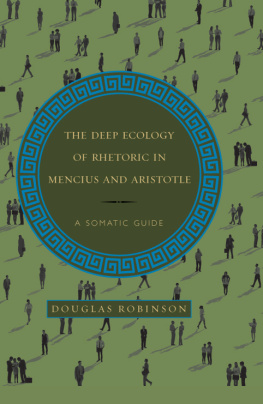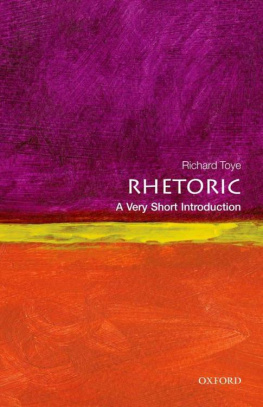
THE ART OF RHETORIC
ARISTOTLE was born in Stageira, in the dominion of the kings of Macedonia, in 384 BC. For twenty years he studied at Athens in the Academy of Plato, on whose death in 347 he left, and, some time later, became tutor of the young Alexander the Great. When Alexander succeeded to the throne of Macedonia in 336, Aristotle returned to Athens and established his school and research institute, the Lyceum, to which his great erudition attracted a large number of scholars. After Alexanders death in 323, anti-Macedonian feeling drove Aristotle out of Athens, and he fled to Chalcis in Euboea, where he died in 322. His writings, which were of extraordinary range, profoundly affected the whole course of ancient and medieval philosophy, and they are still eagerly studied and debated by philosophers today. Very many of them have survived and among the most famous are the Ethics and the Politics, both of which are published in Penguin Classics, together with The Athenian Constitution, De Anima, The Art of Rhetoric, Poetics and the Metaphysics.
HUGH LAWSON-TANCRED was born in 1955 and educated at Eton and Balliol College, Oxford. He is a Departmental Fellow in the Department of Philosophy at Birkbeck College in the University of London. He has published extensively on Aristotle and Plato and is currently engaged in research in computational linguistics. He translates widely from the Slavonic and Scandinavian languages. His translations of Aristotles The Art of Rhetoric and De Anima are also published in Penguin Classics. He is married with a daughter and two sons and lives in north London and Somerset.
ARISTOTLE
The Art of Rhetoric
Translated with an Introduction and Notes by
H. C. LAWSON-TANCRED
PENGUIN BOOKS
PENGUIN BOOKS
Published by the Penguin Group
Penguin Books Ltd, 80 Strand, London WC2R 0RL, England
Penguin Group (USA) Inc., 375 Hudson Street, New York, New York 10014, USA
Penguin Books Australia Ltd, 250 Camberwell Road, Camberwell, Victoria 3124, Australia
Penguin Books Canada Ltd, 10 Alcorn Avenue, Toronto, Ontario, Canada M4V 3B2
Penguin Books India (P) Ltd, 11 Community Centre, Panchsheel Park, New Delhi - 110 017, India
Penguin Books (NZ) Ltd, Cnr Rosedale and Airborne Roads, Albany, Auckland, New Zealand
Penguin Books (South Africa) (Pty) Ltd, 24 Sturdee Avenue, Rosebank 2196, South Africa
Penguin Books Ltd, Registered Offices: 80 Strand, London WC2R 0RL, England
www.penguin.com
First published 1991
Reprinted with updated Bibliography 2004
19
Translation, Introduction and Notes copyright H. C. Lawson-Tancred, 1991, 2004
All rights reserved
The moral right of the translator has been asserted
Except in the United States of America, this book is sold subject to the condition that it shall not, by way of trade or otherwise, be lent, re-sold, hired out, or otherwise circulated without the publishers prior consent in any form of binding or cover other than that in which it is published and without a similar condition including this condition being imposed on the subsequent purchaser
9780141910666
In Piam Memoriam
E.M.L.-T.
CONTENTS
Introduction
THE ART OF RHETORIC
Section One: Introductory
PART ONE: DEMONSTRATION
Section Two: The Genres of Oratory
Section Three: Deliberation
Section Four: Display
Section Five: Litigation
PART TWO: EMOTION AND CHARACTER
Section Six: Emotion
Section Seven: Character
PART THREE: UNIVERSAL ASPECTS
Section Eight: Common Topics
Section Nine: Style
Section Ten: Composition
PREFACE

The translation of Aristotle must be reckoned amongst the greatest, but also amongst the driest, of the pleasures that the study of the Classics affords the scholar. There is hardly a paragraph that he wrote which does not contain some stimulating or arresting thought, some consideration of a familiar problem from a new perspective, or some fruitful discovery of a new problem where all previously seemed to be blandly clear. The freshness of the intellectual content is unvarying, for all that its relevance to the contemporary debate may constantly change. Even, therefore, those treatises that are less than central to the whole corpus are thoroughly deserving of the attentions of the translator, and the present work is a conspicuous example. The Art of Rhetoric (henceforth Rhetoric) could fairly be claimed to be the ancestor of a whole line of texts which defined the academic syllabus for the ordinary educated Greek and Roman. This work, we might say, founded the middle-brow culture of antiquity.
It has certainly been a most rewarding and enjoyable experience to work on the Rhetoric, and my labours will not have been in vain if some portion of that enjoyment is shared by at least some of my readers. It is not, indeed, an immediately accessible text and no ingenuity could make it so, but I hope that those who persist with it will find that the depth of Aristotles understanding of the subject and the originality of his philosophical conception of rhetoric have a compulsion every bit as powerful as the subtlest dialectic or the most rigorous argumentation. One word of warning, however, would be appropriate. The style of exposition is relentlessly piecemeal and draws heavily on citations from a wide literature citations which are often both hard for us wholly to grasp in the first place and moreover presented in a disconcertingly elliptic and compressed manner. My policy with such difficulties has been to pursue the course usual in this series and offer, I hope, adequate information in the notes for the essential point of the reference to be intelligible to the non-specialist reader, without aspiring to give full documentation of all aspects of the original context from which it is drawn. This volume should therefore be intelligible throughout in itself, but invite supplementation in many places from the copious material available in standard works of reference.
Many people have assisted me with this translation, and I am indebted to too many scholars for it to be possible to list them, but I would like especially to thank for their encouragement at all stages A. J. Radice and E. C. Jenkyns, though I must remove the poison from the chalice by speedily exempting them from complicity in such no doubt numerous errors as even their diligence may have failed to eliminate. In the matter of the diligent elimination of mistakes, I would also like to express my great gratitude to Kate Parker, whose copy-editing services to this orthographically complicated text have been of an exceptional order.
HUGH LAWSON-TANCRED
INTRODUCTION

1. THE IMPORTANCE OF ANCIENT RHETORIC
Can there be a science of persuasion? It would be hard to deny that the ability to persuade, convince, cajole or win round is one of the most useful skills in human life. It is a capacity that shows its importance equally easily in the market, the court, the council chamber and the bedroom. It seems a crucial knack to be mastered by anyone aspiring to influence the private or public activities of men and women, for whatever ends. Yet at the same time it would appear to be and is so held by popular supposition not something that can be transmitted from a master to his disciples, not something that can be acquired as the result of a patient period of study, not something that can be reliably achieved by following a rigorous method. It seems rather to be a gift dispensed among mortals with capricious favouritism, whose results can only otherwise be achieved by fluke and good fortune. It is certainly natural to think that oratory, like musical or sporting prowess, is a natural endowment, open only to the envy, not for the emulation, of those denied it. The twentieth century has seen only too many cases of the natural, untutored orator capable of wielding often demonic influence over a malleable crowd. All too often the voice of reason, decency and common sense has been left impotent by a deficiency in that magical art of persuasion which seems to remain the perquisite only of a charmed few. On other occasions, a speaker with no credentials or proven record of persuasive utterance may by happy chance hit on the one One of attack that will bring him or her success. Many, contemplating these varied outcomes of oratorical exercises, would be tempted to throw their hands up in despair and pronounce the art of oratory to be a wholly unscientific and unsystematic affair, in which it would be vain to look for valuable instruction.

